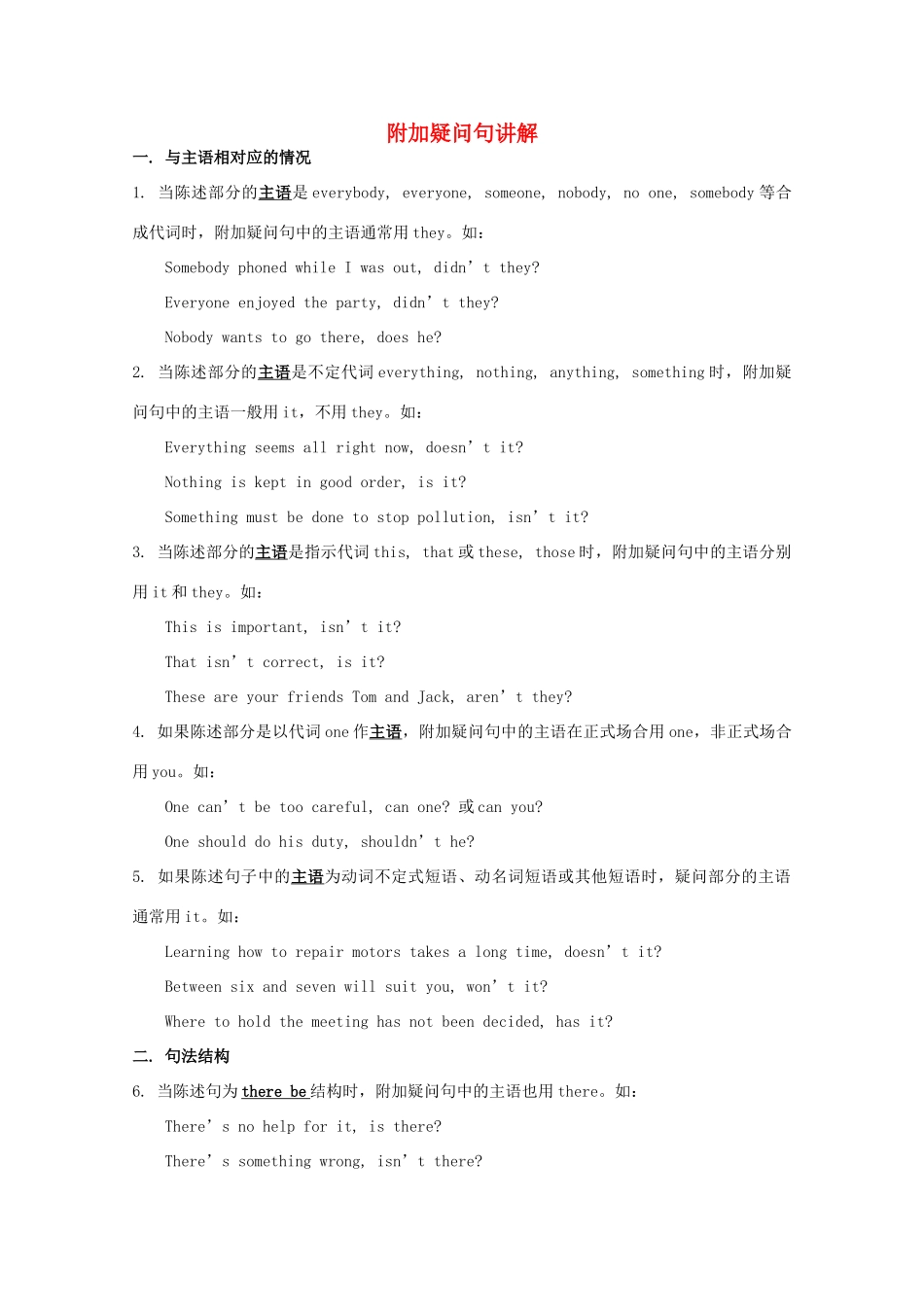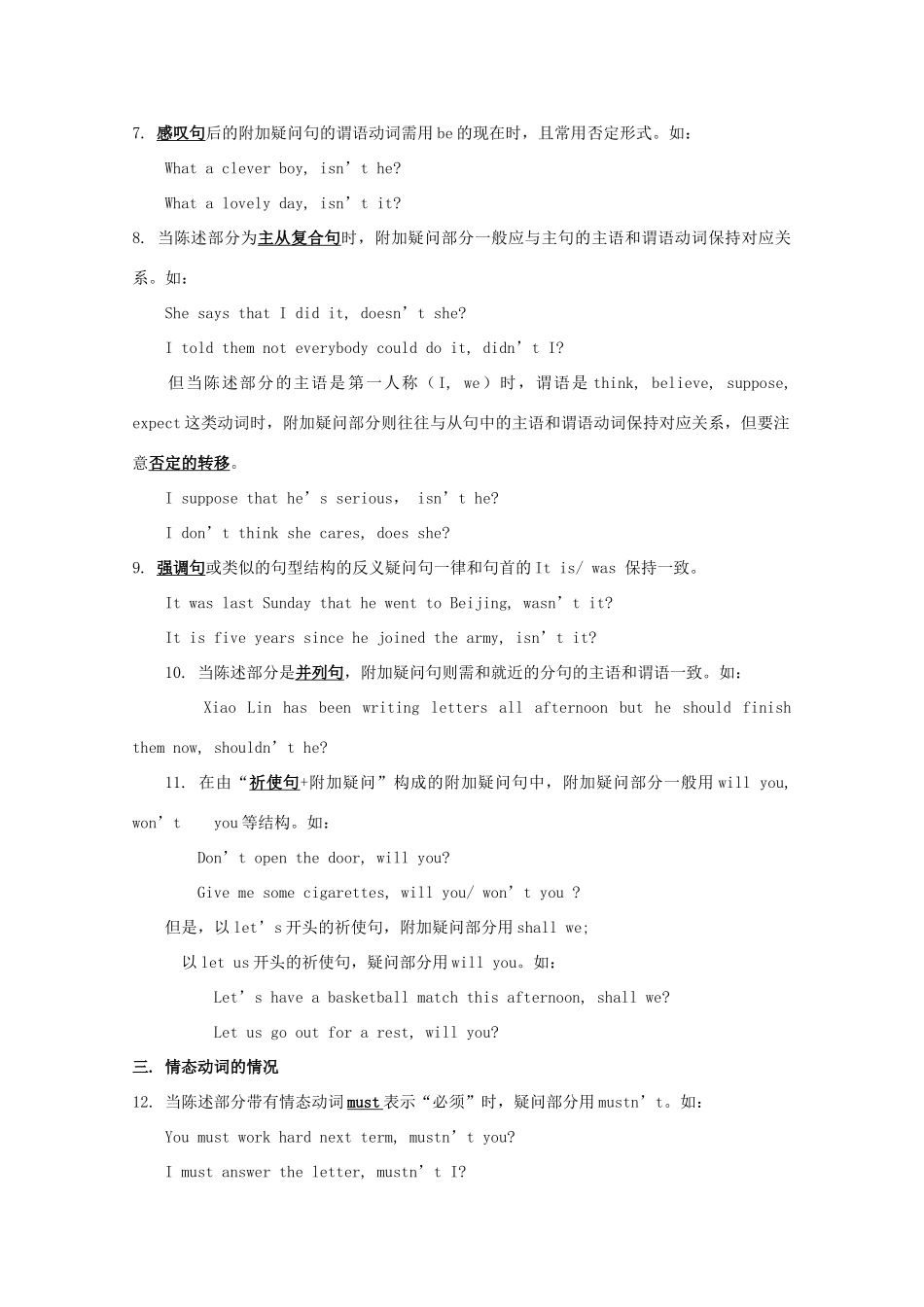附加疑问句讲解一. 与主语相对应的情况1. 当陈述部分的主语是 everybody, everyone, someone, nobody, no one, somebody 等合成代词时,附加疑问句中的主语通常用 they。如: Somebody phoned while I was out, didn’t they? Everyone enjoyed the party, didn’t they? Nobody wants to go there, does he? 2. 当陈述部分的主语是不定代词 everything, nothing, anything, something 时,附加疑问句中的主语一般用 it,不用 they。如: Everything seems all right now, doesn’t it? Nothing is kept in good order, is it? Something must be done to stop pollution, isn’t it? 3. 当陈述部分的主语是指示代词 this, that 或 these, those 时,附加疑问句中的主语分别用 it 和 they。如: This is important, isn’t it? That isn’t correct, is it? These are your friends Tom and Jack, aren’t they? 4. 如果陈述部分是以代词 one 作主语,附加疑问句中的主语在正式场合用 one,非正式场合用 you。如: One can’t be too careful, can one? 或 can you? One should do his duty, shouldn’t he? 5. 如果陈述句子中的主语为动词不定式短语、动名词短语或其他短语时,疑问部分的主语通常用 it。如: Learning how to repair motors takes a long time, doesn’t it? Between six and seven will suit you, won’t it? Where to hold the meeting has not been decided, has it? 二. 句法结构6. 当陈述句为 there be 结构时,附加疑问句中的主语也用 there。如: There’s no help for it, is there? There’s something wrong, isn’t there? 7. 感叹句后的附加疑问句的谓语动词需用 be 的现在时,且常用否定形式。如: What a clever boy, isn’t he? What a lovely day, isn’t it? 8. 当陈述部分为主从复合句时,附加疑问部分一般应与主句的主语和谓语动词保持对应关系。如: She says that I did it, doesn’t she? I told them not everybody could do it, didn’t I? 但当陈述部分的主语是 第一人称(I, we)时,谓语是 think, believe, suppose, expect 这类动词时,附加疑问部分则往往与从句中的主...


